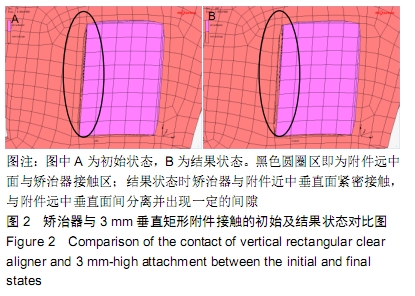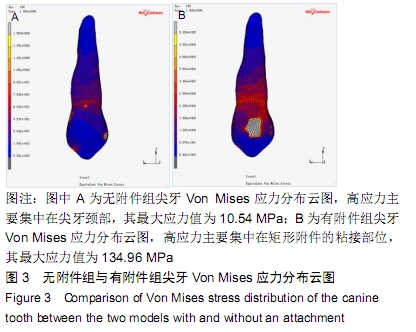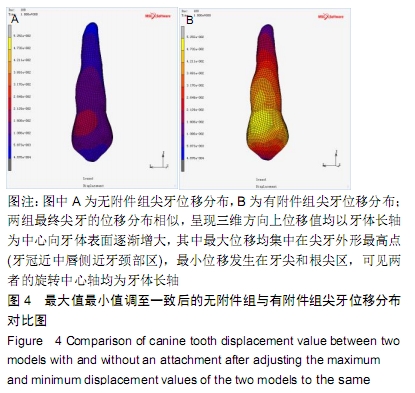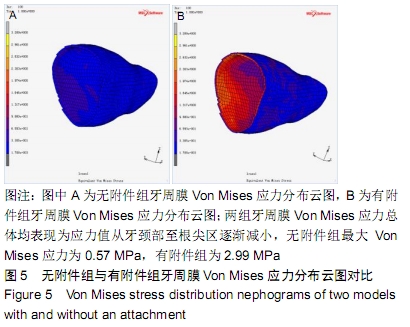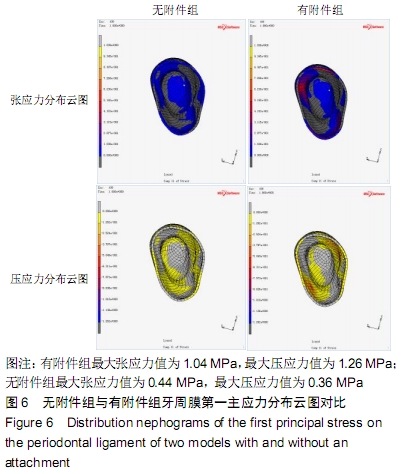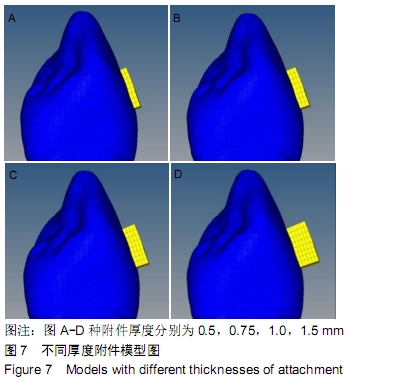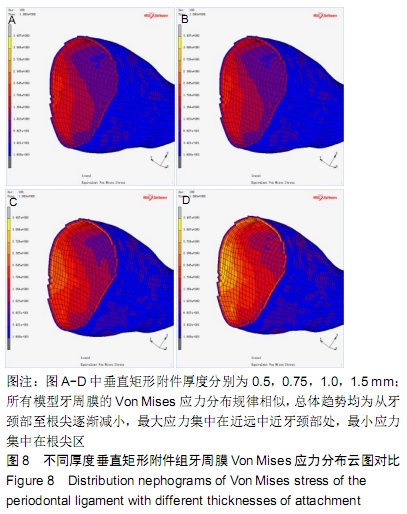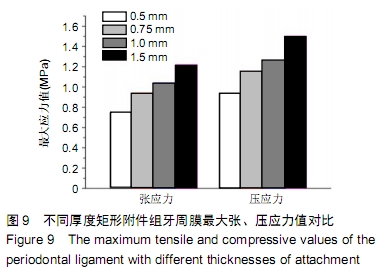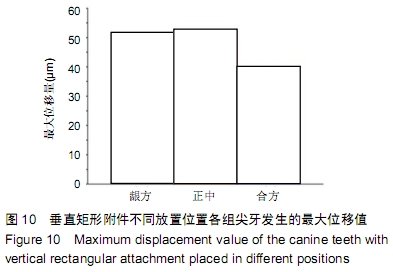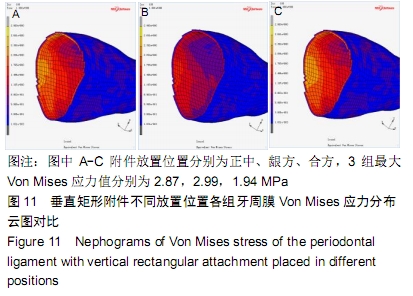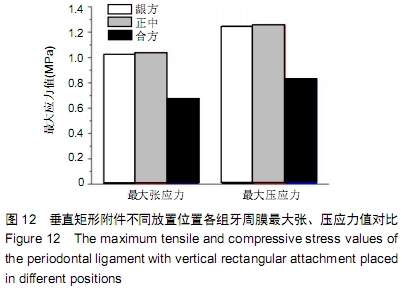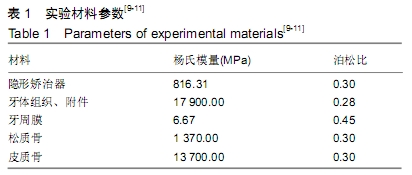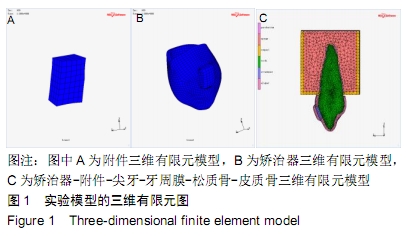中国组织工程研究 ›› 2020, Vol. 24 ›› Issue (16): 2513-2519.doi: 10.3969/j.issn.2095-4344.2262
• 组织工程口腔材料 tissue-engineered oral materials • 上一篇 下一篇
矩形附件厚度与位置变化对矫正尖牙扭转的影响#br#
陈周艳1,周 容2,何 淞3,吴定丹3,吴 稀3,白 蕊3,黄 跃4
- 1雅安市人民医院口腔科,四川省雅安市 625000;2绵阳市中医医院口腔科,四川省绵阳市 621000;3西南医科大学附属口腔医院,四川省泸州市 646000;4暨南大学口腔医学院•附属口腔医院,广东省佛山市 528000
Effects of the changes of thickness and placement position of rectangular attachment on canine tooth torsion correction
Chen Zhouyan1, Zhou Rong2, He Song3, Wu Dingdan3, Wu Xi3, Bai Rui3, Huang Yue4
- 1Department of Stomatology, Yaan People's Hospital, Yaan 625000, Sichuan Province, China; 2Department of Stomatology, Mianyang City Hospital of Traditional Chinese Medicine, Mianyang 621000, Sichuan Province, China; 3Hospital of Stomatology, Southwest Medical University, Luzhou 646000, Sichuan Province, China; 4Affiliated Stomatology Hospital of Jinan University School of Stomatology, Foshan 528000, Guangdong Province, China
摘要:
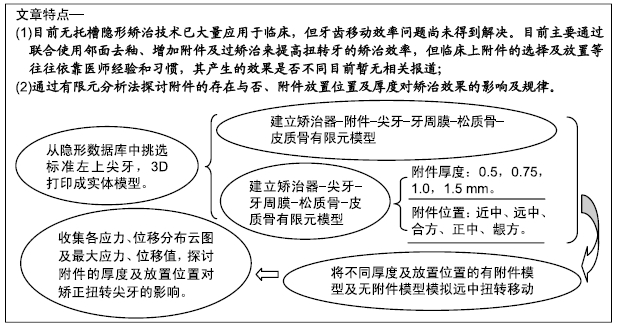
文题释义:
附件:在无托槽隐形矫治中为了提高隐形矫治器的固位、更好地控制牙齿三维方向上的移动及支抗设计等,常需要在牙齿上设计及粘接相应的附件,但附件的放置及选择常常仅依靠医生的个人经验及习惯,附件变化对牙齿三维移动的生物力学影响尚有待进一步的研究及证实。
扭转力学:即正畸中的旋转移动,指在正畸治疗过程中牙体围绕其牙体长轴的转动。实验通过将各组矫治器以尖牙牙体长轴为旋转轴,将矫治器远中扭转2°以模拟矫治中的尖牙远中扭转,探讨附件的变化对扭转力学的影响。
背景:临床上采用无托槽隐形矫治器矫治扭转牙时,主要通过联合使用邻面去釉、增加附件及过矫治来提高矫治效率,但附件的选择及放置等仅依靠医师经验和习惯而定,其产生的效果是否不同目前暂无相关报道。
目的:通过三维有限元法探究矩形附件的存在及厚度和放置位置对隐形矫治器矫正左上颌尖牙扭转的影响。
方法:通过离体牙扫描数据分别建立矫治器-附件-尖牙-牙周膜-松质骨-皮质骨(有附件组)与矫治器-尖牙-牙周膜-松质骨-皮质骨(无附件组)有限元模型。其中有附件组中的附件厚度又分为0.5,0.75,1.0,1.5 mm(附件的放置位置、垂直高度、水平宽度和放置方向均设为一致),放置位置又分为近中、远中、合方、正中、龈方5个区域(附件的厚度、垂直高度、水平宽度和放置方向均设为一致)。将各组的矫治器以尖牙牙体长轴(X轴)为旋转中心轴,将矫治器远中扭转2°,在MSC.Marc.Mentat软件中模拟运算,收集各应力、位移分布云图及最大应力、位移值。
结果与结论:①无论是否使用矩形附件,模型最终状态时尖牙均发生了不同程度的顺时针扭转,无附件组与有附件组模型尖牙位移及牙周膜应力分布趋势一致,但有附件组模型中尖牙位移值及牙周膜各种应力值均不同程度的大于无附件组;②随着矩形附件厚度的增加,尖牙的最大位移随之增大,分别为42.94,49.32,52.52,59.39 µm;③当矩形附件放于尖牙牙冠唇面不同位置时,尖牙的最大位移值变化规律为正中与龈方差别不大,但两者均明显大于合方,而近中、远中向的变化不规律;④结果表明,附件的使用不会改变初戴矫治器瞬间尖牙的移动方式,其仅在矫正扭转尖牙时起到了协同作用;附件厚度对矫治器扭转表达有一定的影响,当厚度增大时尖牙所发生的最大位移及牙周膜受力越大;矩形附件在牙冠唇面合、龈方向的粘接位置越靠近牙冠外形高点处,越有利于矫治器对扭转尖牙的控制。
ORCID: 0000-0001-9902-8967(陈周艳)
中国组织工程研究杂志出版内容重点:生物材料;骨生物材料; 口腔生物材料; 纳米材料; 缓释材料; 材料相容性;组织工程
中图分类号:
